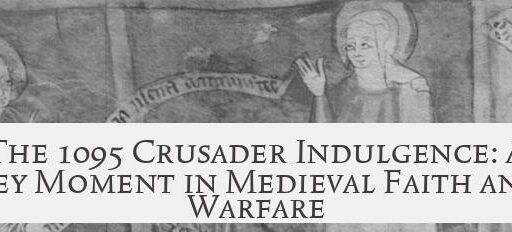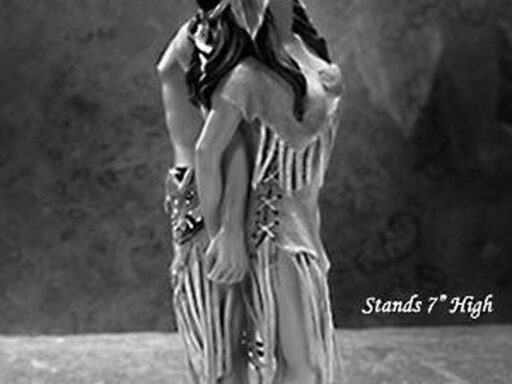Baldwin IV was generally regarded as a good, just, and merciful king of Jerusalem, particularly in hindsight after his death. He demonstrated wisdom in ruling despite his severe illness and helped maintain the kingdom’s stability during a challenging period. However, the idea that he personally saved thousands of lives at the Siege of Kerak in 1183 is an overstatement based on historical evidence.
Baldwin IV, also called the “Leper King,” ruled Jerusalem in the late 12th century during a time when the Crusader kingdom faced constant threats from Muslim forces under Saladin. Despite suffering from leprosy from a young age that progressively crippled him, Baldwin maintained firm control over his realm. His disease led many contemporaries to doubt his capacity to rule or produce an heir. Some even suggested he should abdicate in favor of a stronger leader, given the dangers the kingdom faced in the Near East.
Leprosy was often viewed as divine punishment at the time. For example, Pope Alexander III believed Baldwin’s illness indicated personal sin. Yet Baldwin defied these expectations by proving himself a just and capable ruler. His leadership and strategic decisions delayed the fall of Jerusalem and bolstered crusader morale during threats.
The siege of Kerak castle in 1183 is a notable episode during Baldwin’s reign. Kerak was a fortress controlled by Raynald de Châtillon and was strategically vital since it threatened Muslim trade and pilgrim routes. Saladin’s assault on Kerak aimed to demonstrate his power and intimidate the crusaders rather than capture the area permanently. Interestingly, the siege coincided with the wedding of Baldwin’s half-sister Isabella, which Saladin allowed to continue peacefully.
By 1183 Baldwin was physically incapacitated, unable to walk or command troops in battle actively. Despite this, he reportedly traveled to Kerak on a litter to show support. His arrival boosted the defenders’ morale but likely did not influence Saladin’s decision to retreat significantly; Saladin’s withdrawal was more due to larger strategic factors, including the arrival of a crusader relief army and his broader inability to commit to a full invasion at that time.
The notion that Baldwin single-handedly saved thousands during this siege is not supported by detailed historical analysis. The castle’s population, even accounting for wedding guests, numbered far less than thousands. Baldwin’s presence helped prevent a pitched battle, which could have caused many casualties. Indirectly, this may have averted large-scale loss of life at that moment, as the kingdom avoided a major clash until the later disastrous battles at Hattin (1187) and Jerusalem’s fall. Yet, the majority of the credit lies with the collective leadership and military context, not Baldwin alone.
- Baldwin IV’s reign is remembered as wise and just despite his physical limitations.
- Contemporary views were mixed due to his leprosy and lack of heirs.
- Baldwin’s presence at Kerak boosted morale but did not directly force Saladin’s retreat.
- Saladin’s siege was largely a show of strength, limited by strategic constraints.
- Thousands of lives were not literally saved at Kerak, but broader peace was temporarily maintained.
In summary, Baldwin IV exemplified strength and fairness as king under extraordinary circumstances. He ruled justly, showing mercy and wisdom despite losing his health. While the siege of Kerak was critical in the kingdom’s defense, the evidence does not support the view that Baldwin single-handedly saved thousands there. His true legacy lies in maintaining the kingdom’s existence during a perilous era, delaying its fall until after his death.
Was Baldwin IV a Good, Just, and Merciful King of Jerusalem? And Did He Save Thousands of Lives at the Siege of Kerak (1183)?

Short answer: Yes, Baldwin IV was widely considered a good, just, and merciful king of Jerusalem, especially in hindsight after 1187. However, while his presence at the Siege of Kerak in 1183 helped morale, he did not single-handedly save thousands of lives during that event. The real impact was more indirect, preserving peace a few years before the kingdom’s eventual fall.
Let’s dive deeper into Baldwin IV’s reign and the significance of the Siege of Kerak.
Baldwin IV: The Leper King Who Ruled with Wisdom
Baldwin IV’s story is compelling from the start. Diagnosed with leprosy at an early age, he faced a death sentence that wrecked many a political career in medieval times. Back then, leprosy was seen harshly—not just as an illness, but as divine punishment.
Pope Alexander III once suggested Baldwin’s affliction hinted at some moral failing, assuming leprosy meant sin.
Thankfully, Baldwin himself didn’t buy into such stigma or step down from the throne, despite court whispers and political schemes. Instead, he kept ruling with sharp intellect and a strong sense of justice.
Was he just and merciful? Contemporary opinions were mixed. Some nobles doubted him, fearing his health would fail and lead the kingdom to chaos. But all later agreed—he ruled wisely, making tough but fair decisions that kept Jerusalem stable in a volatile region.
His legacy? Many historians credit Baldwin IV with extending the kingdom’s life through the 1180s. Jerusalem fell only after he died, indicating the successors lacked his skill and fairness.
The Siege of Kerak: Drama and Strategy Unfold
By 1183, Baldwin’s condition worsened. He couldn’t ride horses or wield swords anymore. In fact, nobody was sure if he could still lead a battle.
Yet, when Saladin besieged Kerak castle—a strategic fort owned by Raynald of Châtillon—Baldwin showed up. Not on horseback, but carried on a litter. This surprise appearance gave everyone a morale boost during the tense siege.
Why was Kerak important? This fortress controlled pilgrim and merchant routes from Syria and Egypt. Raynald used Kerak as a base for raiding caravans, provoking Saladin’s wrath.
Meanwhile, inside the castle, a wedding was happening—Raynald’s stepson Humphrey was marrying Baldwin’s half-sister Isabella. Saladin, perhaps trying to show a hint of chivalry, agreed not to attack the wedding festivities.
Saladin’s siege was largely a show of force. He could not yet invade Jerusalem outright but wanted to demonstrate power and intimidate the crusaders. Still, when Baldwin’s army marched toward Kerak, Saladin withdrew, as expected.
Did Baldwin Save Thousands of Lives?

Here’s the scoop. It’s tempting to believe Baldwin’s presence alone at Kerak saved thousands. After all, having a king courageously arrive during a siege sounds heroic, right? But realistically, the castle didn’t hold thousands – even with wedding guests.
And Saladin’s withdrawal was likely to happen anyway once Crusader forces appeared. Whether Baldwin led troops or not made little difference tactically on that occasion.
So where’s the life-saving angle? It’s indirect. By avoiding a bloody conquest in 1183, tens of thousands weren’t killed prematurely. Hattin and the 1187 siege of Jerusalem were bloodbaths that occurred only after Baldwin’s death. Had Saladin succeeded earlier, more people might have died in those years.
In a sense, Baldwin’s reign postponed catastrophe.
What Can We Learn from Baldwin IV’s Rule?
- Leadership Amid Adversity: Baldwin’s resilience teaches us to lead even when physically weak or doubted.
- Morale Matters: His presence at Kerak was a morale boost. In wars, nerves and spirits can matter as much as swords and shields.
- Legacy Beyond Life: A just and steady leader can keep institutions stronger than his successors.
A Unique Look at a Complex Figure
Was Baldwin IV perfect? No. He was a human with limitations. But calling him a good, just, and merciful king is apt in the broad sweep of history. His physical illness didn’t stop him from ruling fairly and bravely.
His story also reminds us that history isn’t always about dramatic battles or grand rescues. Sometimes, leadership means steadying the ship, inspiring hope, and quietly saving lives by preventing unnecessary fights.
In the end, Baldwin IV’s courage during the siege, his just rule, and his refusal to relinquish the throne—despite personal suffering—define his legacy far more than mere battlefield heroics could.
In Conclusion
Baldwin IV earns his title as a good, just, and merciful king not because he was flawless, but because he ruled wisely under pressure and adversity. And yes, while he didn’t directly save thousands of lives at the Siege of Kerak, his presence helped avoid a bloody conflict at that moment, indirectly protecting many.
What do you think? Could a leader today draw lessons from a medieval king whose kingdom survived largely due to his strength of character rather than sheer force? Maybe Baldwin IV’s story has more than historical value—it might inspire modern leadership too.




